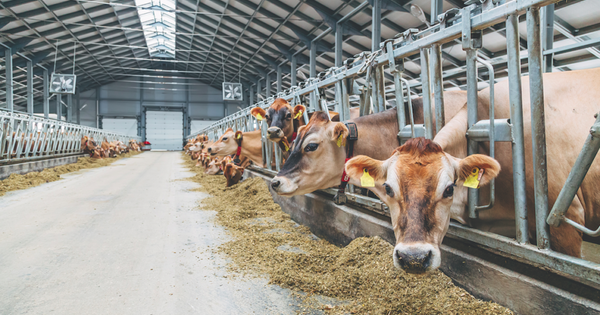Early predictions indicate that the El Nino climate phenomena could return later this year, potentially opening the door for the first time that the vital 1.5 degree Celsius threshold will be crossed by global temperatures.
El Nino and La Nina, two opposing states of oscillation in the Earth’s climate system, make up the El Nino Southern Oscillation system. These states can have a big impact on weather, wildfires, ecosystems, and economy all across the world.
Professor Adam Scaife, head of long-range prediction at the U.K. Met Office, described the El Nino Southern Oscillation as “the biggest single natural variation in climate that we know about on the timescale of a few years.”
El Nino or “the little boy” in Spanish is widely recognized as the warming of the sea surface temperature, which occurs every few years. When sea temperatures in the tropical eastern Pacific reach 0.5 degrees Celsius above the long-term average, an El Nino event is declared.
Following a prolonged period of La Nina, which often has the impact of reducing global temperatures compared to normal years, expectations of El Nino’s return are present.
The last eight years have been recorded as the eight warmest on record, despite La Nina conditions persisting for a third successive year in 2022.
The warmest year ever recorded, 2016, started off with a powerful El Nino that helped to boost global temperatures.
The effects of El Nino tend to peak during December, but the impact typically takes time to spread across the globe. This lagged effect is why forecasters believe 2024 could be the first year that humanity surpasses 1.5 degrees Celsius.
“The big question then is what will happen towards the end of the year?” Scaife told CNBC via telephone. “We don’t know the answer to that question yet. It is a bit early to say … but the current chances are, I would say, between 60% and 70% for an El Nino event in the coming year.”
“It is possible that, if we get a large El Nino, we’re going to get very close and it could be the first year above 1.5 degrees,” Scaife said.
The world’s leading climate scientists warned last year that the fight to keep global heating under 1.5 degrees Celsius had reached “now or never” territory. Climate prediction centers have since said there is a 50-50 chance of overshooting 1.5 degrees Celsius in the coming years.
We cannot yet say how warm this El Nino will be, and that will actually determine very much if we will likely beat the record and the 1.5-degree temperature limit. It is important to mention that there are a lot of weather and climate phenomena associated with El Nino, which are far away.
Eigil Kaas
The 1.5 degrees Celsius threshold is the aspirational global temperature limit set in the landmark 2015 Paris Agreement. Its significance is well acknowledged since, over this amount, “tipping points” are more likely to occur. Tipping points are the points at which minor adjustments can cause significant changes in the whole life support system of the planet.
To put things into perspective, Scaife said that the impact of El Nino might lead to an increase in global average temperatures of around 0.2 degrees Celsius, “whereas the amount of warming we now have in the climate system is 1.2 degrees Celsius, so six times bigger. These natural fluctuations are really the icing on the cake.”
“There is this massive underlying warming due to climate change. What we’re saying is the first year above 1.5 will likely be an El Nino year, because that’s the year when it gets topped up with this extra bit of natural warming,” Scaife said.
El Nino impacts
Scaife said that the Met Office’s forecasts indicate the Pacific is currently experiencing temperatures of about -0.5 degrees Celsius below normal levels. A neutral episode could then give way to El Nino conditions of 0.5 degrees Celsius above the normal baseline by June or July.
“Very often in spring there is something we call the ‘spring barrier’ in terms of the predictability of the El Nino phenomenon,” Eigil Kaas, scientific leader of the National Centre for Climate Research in Denmark, told CNBC via telephone.
The so-called spring barrier underlines the uncertainty in the outlook for the El Nino Southern Oscillation in the first six months of the year.
“We are not yet past that barrier. Once we are beyond it, that means maybe in late April or May, then the forecasts become more certain,” Kaas said.
Asked about the prospect of global temperatures surpassing the 1.5-degree threshold next year, Kaas replied, “That is a possibility, indeed.”
“We cannot yet say how warm this El Nino will be, and that will actually determine very much if we will likely beat the record and the 1.5-degree temperature limit,” Kaas said. “It is important to mention that there are a lot of weather and climate phenomena associated with El Nino, which are far away.”
El Nino episodes can have a significant impact on weather conditions worldwide. For instance, the northern areas of South America are likely to experience reduced rainfall and incur an increased risk of fires and droughts.
Indonesia could also be drier than average, as rainfall moves out to the Pacific Ocean, increasing the risk of wildfires. Meanwhile, drier conditions in eastern Australia could increase the risk of drought.
“To me, the big story is really that we have had so high temperatures in the last three years while we had La Nina. How much extra will come if we have a strong El Nino later this year? That is, of course, also interesting, but the amazing thing is that we have had these very high temperatures globally over the last three years,” Kaas said.
















